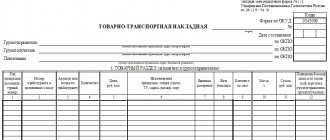When there are a lot of goods, the question arises: where to store the products? What to consider when storing, what methods are available and how to choose the best one - read our article
From this article you will learn:
- 4 ways to store goods Method 1. At home or in the garage
Method 2. At a retail outlet (utility room)Method 3. In a container
Method 4. In stock
- What to choose: rent or safekeeping (outsource)?
- How to choose a warehouse?
What to choose: responsible storage (outsource) or warehouse rental?
You can rent a warehouse and organize storage yourself or contact a logistics company. You pay for the services, and the company you hire stores, receives, processes, ships and moves the goods without your participation - this is called custody. From a legal point of view, custody is regulated by Article 47 of the Civil Code of the Russian Federation. It describes the contents of the storage agreement and the features of storage in a warehouse.
Advantages and disadvantages of using an outsourced warehouse (secured storage)
Advantages:
- The lessee pays only for unloading, storage and packaging of goods.
- If the goods are damaged, the logistician pays the client a penalty. In case of fire or theft, the logistics company compensates for losses.
- The warehouse operator pays the costs of maintaining personnel and equipment, keeps records of goods, and handles unloading and delivery. The tenant is freed from these worries. Maintenance of workers and equipment is included in the rent.
- You focus on business development and do not waste time on recruiting personnel, accounting for goods, organizing unloading and delivery.
Flaws:
- High cost of safekeeping. The price is set by the logistics company.
- You are subject to the rules of the outsourcing company.
- Products are shipped and dispatched only during business hours. This is inconvenient if your online store is open on holidays.
- The Company may refuse to stock certain items at its sole discretion. Most often these are goods that are prohibited to store (seized or restricted property), as well as firearms, explosive and toxic substances. Not all companies agree to place food and animals (they require special storage conditions).
- The outsourcing company may be unscrupulous. Be careful when drawing up a custody agreement.
Renting a warehouse: pros and cons, differences from safekeeping
Advantages:
- You choose the warehouse you need in an area convenient for you.
- It is convenient to sort the goods.
- You choose what time to unload and deliver the goods.
- You can store any types of goods.
- You can use the warehouse on the day you sign the rental agreement.
Flaws:
- The tenant is responsible for risks and damage to goods in the rented warehouse.
- When renting a warehouse for storing goods that require special storage conditions (food, animals, explosive and toxic substances, medicines), you will need a lot of additional documents. For example, to open a pharmacy warehouse, in addition to permission from Rospotrebnadzor to locate it, you will need a whole package of documents.
- You pay for the entire rented area, even if the goods are stored only on part of it.
- All expenses for equipment and staff costs are borne by the tenant.
- You yourself handle the preparation of logistics documentation and select the optimal number of employees to perform work in the warehouse.
- It is necessary to allocate additional time to resolve issues regarding delivery, distribution of goods, and additional processing.
Temporary storage of goods as a customs procedure
The term “temporary storage of goods” represents the stay of foreign products in specially equipped places.
Products are under constant control of the customs authority. The cargo is stored until it is released from customs or other procedures are completed. The difference between this procedure is that it can be performed without paying taxes and other duties and without obtaining special documents (licenses, permits, etc.). The deadline for paying import customs duties is here.
To carry out temporary storage, you do not need to enter the products into the customs regime or fill out a declaration.
Having a problem? Call our customs specialist:
Moscow and region (call is free)
Saint Petersburg
Purposes of temporary storage
Temporary storage of cargo serves many purposes:
- Ensuring complete safety and quality protection of transported goods until the end of their customs clearance.
- Providing all interested participants in foreign trade activities with the opportunity to timely prepare and submit a customs declaration, as well as conduct product inspections.
- Excluding the removal of products from the supervision of the customs government body.
- Preventing unauthorized persons from accessing the products until the registration procedure is completed.
- Elimination of the possibility of unauthorized use of products before completion of the registration procedure.
- Providing the opportunity for government agency employees to freely carry out all necessary examinations and assessments of products.
- Ensuring that the cargo remains in an unchanged condition.
Customs officials and other persons who have access to storage areas do not have the right to use the goods. Only inspections and assessments can be carried out.
Exceptions
Products can be transported by a variety of vehicles. Goods that are transported cannot stay in such warehouses:
- pipeline transport;
- power lines.
Decor
To place foreign products under temporary storage, you do not need to prepare and submit a customs declaration.
But a certain package of documents still needs to be prepared. The list of papers can be clarified at the customs authority itself or on its official website. The prepared package of documents must be submitted within 3 days after the cargo is provided to the government agency. The documents must be submitted either by the carrier himself or by an authorized representative.
The papers are registered within an hour. After completing this procedure, the products are listed in temporary storage.
Temporary storage of cargo at customs is not a mandatory procedure. The carrier can avoid it. To do this, within 3 hours after providing the products to the relevant government agency, it is necessary to fulfill all customs obligations.
It is worth noting that this procedure is applicable to any foreign-made goods, regardless of whether they are transported legally or illegally into the territory of the state. If goods are brought into the territory illegally, the owner must pay for storage.
How to choose a warehouse?
The premises must meet the following requirements:
| Fire safety | The warehouse has a fire alarm and a fire extinguisher. It is desirable to have an automatic fire extinguishing system. The premises must comply with fire safety requirements |
| Protection from burglary and natural elements, damage and dampness | The premises are guarded, have communications and a security system, automatic gates, and access control is in effect. |
| Compliance with sanitary standards | The room is clean, dry, and away from landfills and hazardous substances. |
| Availability of access roads | The warehouse is accessible for transport at any time of the day |
What determines the price of renting a warehouse in St. Petersburg?
The further the warehouse is from the central part of the city, the lower its cost. How much does it cost to rent a warehouse in St. Petersburg? You can find a warehouse from 400 rubles per square meter. The classification of the room also affects the price.
| Metro | Warehouse category | Area, sq. m | Rental cost, rub. per month | Average cost of 1 sq. m/month |
| Central regions | ||||
| M. pl. A. Nevsky | A | 4170 | 1 459 500 | 350 |
| M. Spasskaya | A | 211 | 390 350 | 1850 |
| M. Krestovsky Island | IN | 20 | 12 870 | 643 |
| M. Nevsky Prospekt | IN | 458 | 1 500 000 | 3275 |
| M. Vasileostrovskaya | IN | 22 | 19 800 | 900 |
| M. Baltiyskaya | B | 1300 | 600 000 | 462 |
| M. Nevsky Prospekt | WITH | 19 | 19 000 | 1000 |
| M. Chernyshevskaya | WITH | 23 | 22 700 | 987 |
| Not central areas | ||||
| M. Obukhovo | A | 6000 | 2 340 000 | 390 |
| M. Obukhovo | A | 2000 | 780 000 | 390 |
| M. Obukhovo | A | 4100 | 1 599 000 | 390 |
| M. Obukhovo | A | 8000 | 3 120 000 | 390 |
| M. Ozerki | IN | 1826 | 839 960 | 460 |
| M. Bukharestskaya | WITH | 126 | 56 750 | 450 |
| M. Udelnaya | WITH | 681 | 252 100 | 370 |
| M. Parnas | C | 30 | 43 000 | 1433 |
*Prices are current as of February 2021.
Average cost (calculated median - median value) of rent in rubles. for 1 sq. m in warehouses of different categories
| Location | A | IN | WITH |
| In the center | 1100 | 771,5 | 993,5 |
| Not in the center | 390 | 460 | 450 |
Renting a warehouse in residential areas of St. Petersburg is ~3 times cheaper than central ones.
Analysis of rental and outsourcing costs
| Type of expenses | Responsible storage (outsourcing) | Rent |
| For storage of goods | Pay as you store: don't pay if you don't store anything | Payment for the entire rented area: it doesn’t matter whether you store the goods or not |
| For the maintenance and repair of the warehouse, the purchase of equipment | No | Yes |
| For personnel who are trained to work with the product | No | Yes |
| To eliminate damage (in case of damage to goods, unsatisfactory speed of work) | No | Yes |
Secure storage in a good and honest logistics company will save you from many worries. If you prefer to control everything and do it yourself, store the goods at a retail outlet, rent a warehouse or container.
Special customs control zone
Order of the Federal Customs Service of the Russian Federation dated December 6, 2007 No. 1497 “On approval of mandatory requirements for the arrangement, equipment and location of temporary storage warehouses” came into force. How exactly should the premises be equipped in order to obtain permission and be included in the Register of Temporary Storage Warehouse Owners?
The legal status of temporary storage warehouses (hereinafter referred to as temporary storage warehouses) is regulated by a number of articles of the Customs Code of the Russian Federation (hereinafter referred to as TKRF), however, such a serious institution requires more detailed legal regulation. The territory of the temporary storage warehouse is intended, first of all, to ensure the safety of goods and the implementation of customs control over these goods, excluding access to them by unauthorized persons. Order of the Federal Customs Service of the Russian Federation dated December 6, 2007 No. 1497 (hereinafter referred to as the Order) clarifies the mandatory requirements for the arrangement, equipment and location of a temporary storage warehouse for the purposes of ensuring customs control.
The activities of legal entities as owners of temporary storage warehouses are permitted only if they are included in the appropriate Register (Article 18 of the Customs Code of the Russian Federation).
Warehouse arrangement
How to set up a temporary storage warehouse is outlined in art. 107 Labor Code of the Russian Federation. The new Order expands these requirements, fixing a closed list of 8 points:
for open-type warehouses, premises only in above-ground buildings and structures;
mandatory availability of access roads taking into account the type of transport used;
the presence of a covered area for customs inspection;
fencing of the adjacent protected area with a hard surface;
taking into account the specifics of the warehouse, fencing or marking an open area on the ground;
the inadmissibility of the presence on the territory of objects not related to the functioning and maintenance of the temporary storage warehouse;
an adapted and equipped room for goods with special storage conditions is required;
the presence of checkpoints and appropriate means of ensuring control over the movement of goods and vehicles across the borders of the temporary storage warehouse.
Paragraph 11 of the Order of the Federal Customs Service of the Russian Federation dated October 31, 2007 No. 1352 “On approval of the administrative regulations of the Federal Customs Service for the execution of the state function of maintaining the Register of owners of customs warehouses and the Register of owners of temporary storage warehouses” determines that information about the availability of premises and open areas is subject to verification with a visit to their places location.
Equipment
Most of the Order is devoted to the requirements for temporary storage warehouse equipment, both in terms of arrangement and in terms of material and technical equipment.
In terms of arrangement, temporary storage warehouse equipment may include the need for access roads to parts of the premises and even their isolation (fencing), if such a premises is intended to be used simultaneously for storing goods placed under the customs warehouse regime and goods in temporary storage.
In terms of material and technical equipment, temporary storage warehouse equipment includes:
technical means of customs control of fissile and radioactive materials, as well as inspection X-ray equipment, the quantity, type of which the customs office establishes independently or in agreement with a higher customs authority, taking into account the relevant standards. (When installing such means, it would not be amiss to familiarize yourself with the Letter of the State Customs Committee dated February 25, 2004 No. 01-06/6918.);
segments allocated in the local computer network, equipped with appropriate information security means for the work of the customs authority, as well as a communication channel for receiving and transmitting data on the delivery of goods and their customs clearance with the information transmission speed required for these purposes;
weighing equipment with different weighing limits;
automated goods accounting system, compatible with software products approved for use by customs;
telephone, fax, office equipment and copying equipment;
loading and unloading equipment in quantities sufficient for complete unloading of goods. (The concept of “vehicle” for the purposes of Chapter 12 “Temporary storage of goods” is given in the note to Article 107 of the Labor Code of the Russian Federation.)
The order is replete with provisions that require serious and balanced study by specialized specialists.
For example, the presence of the so-called System - an electronic system for placement and accounting of goods (for temporary storage warehouses equipped with an automated cell storage system for goods) - must correspond to its compatibility with other software products authorized for use by customs authorities. This allows customs to monitor in real time the placement and location of goods in cells, carry out inspection, measurement and a number of other actions. Of course, an important requirement is the ability of the customs authority, using the System, to prohibit certain actions, as well as to block access to goods by electronically blocking cells.
With particular care, potential owners of temporary storage warehouses should study the provisions relating specifically to the material and technical equipment of the warehouse, taking into account that the presence of this information must be reflected in the application for inclusion in the Register of temporary storage warehouse owners (subclause 4, paragraph 2, article 110 of the Labor Code of the Russian Federation).
Location of the temporary storage warehouse
The first requirement is the location of the temporary storage warehouse at one postal address or within a continuous perimeter territory in the area of operation of the customs post that issues a certificate of inclusion in the Register of temporary storage warehouse owners. This is also evidenced by the previously adopted and currently in force Letter of the State Customs Committee of the Russian Federation dated February 25, 2004 No. 01-06/6906 “On temporary storage warehouses.”
The presence of access roads at the temporary storage warehouse, location in reasonable proximity to transport hubs and highways for the delivery of goods from the customs border of the Russian Federation are also among the mandatory requirements.
There is also a direct prohibition in the Order: temporary storage warehouses “cannot be located on mobile vehicles or mobile equipment of any kind” (clause 4 of the Order).
The minimum requirements for the location of a temporary storage warehouse, outlined in the Order, essentially need to be specified. At the same time, we must not forget the provisions of paragraph 2 of Article 107 of the Labor Code of the Russian Federation, according to which the temporary storage warehouse must be adjacent to a protected area equipped for parking vehicles transporting goods for the time necessary to complete internal customs transit. Such a territory is a customs control zone, and vehicles transporting goods under customs control can enter this zone at any time of the day.
An interesting feature: in accordance with clause 5 of the Order “by decision of customs”, certain requirements for the arrangement and equipment of closed warehouses may not be applied, the main thing is to comply with clause 1 of Article 107 of the Labor Code of the Russian Federation: safety, absence of unauthorized persons, availability of access roads.
It turns out that for closed warehouses it is not at all specified what must be provided for in order to ensure customs control.
For reference: who can store goods in such warehouses is specified in the Federal Customs Service Letter dated October 20, 2006 No. 04-22/36802 “On closed temporary storage warehouses.”
Required knowledge
The provisions of the Order affect, to one degree or another, all participants in foreign trade activities, since the temporary storage warehouse is a customs control zone. When opening a temporary storage warehouse or deciding to use its services, you should definitely take into account the following:
the owner of a temporary storage warehouse is a Russian legal entity included in the Register (clause 1 of Article 108 of the Labor Code of the Russian Federation);
for premises rented for temporary temporary storage, the lease period must be at least one year as of the date of submission of the application for inclusion in the Register of owners of temporary temporary storage (clause 2 of Article 109 of the Labor Code of the Russian Federation);
the nature of the contractual relationship between the owner of the temporary storage warehouse and the persons placing goods in storage is public (clause 3 of Article 108 of the Labor Code of the Russian Federation);
A mandatory condition for inclusion in the Register of temporary storage warehouse owners is the availability of a civil liability insurance contract, taking into account the features of Art. 109 Labor Code of the Russian Federation;
in accordance with the Order of the Federal Service for Veterinary and Phytosanitary Surveillance dated August 3, 2005 No. 220, temporary storage warehouses that carry out customs clearance of regulated products are certified in order to protect the territory of the Russian Federation;
the current Decree of the Government of the Russian Federation dated October 23, 1998 No. 1235 describes measures to speed up customs clearance of technological equipment located in temporary storage warehouses and customs warehouses;
it is necessary to pay customs duties in accordance with Art. 399 of the Labor Code of the Russian Federation (subclause 1, clause 2, article 109 of the Labor Code of the Russian Federation). Customs authorities send written requests for payment of customs duties to the relevant departments, the response to which is given within one day (clause 11 of the Order of the Federal Customs Service of the Russian Federation dated October 31, 2007 No. 1352);
in some cases, goods may be placed at temporary storage warehouses by customs authorities. Remuneration to the warehouse owner for storage and compensation for losses can be carried out both at the expense of certain persons and at the expense of federal budget funds within the limits of documented costs (Article 118 of the Labor Code of the Russian Federation).
It is quite difficult to implement in practice the requirement to exclude unauthorized persons from accessing the temporary storage warehouse (Clause 1, Article 107 of the Labor Code of the Russian Federation). The concept of “outsider” can be partly derived from the provisions of this article. According to it, this is a person who is not a warehouse employee, does not have authority in relation to goods, or is not a representative of persons who have such authority.
Is it necessary to do it?
The Order in question most fully regulates the arrangement of temporary storage warehouses and is focused on “practical application” by customs authorities. At the same time, the Order is replete with generalized and sometimes not specified wording, which can complicate the implementation of the requirements specified in it, forcing endless coordination with the customs authorities of the prescribed provisions.
Opening a temporary storage warehouse for a foreign trade participant is a serious saving of money. Therefore, compliance with the requirements contained in it is extremely important for legal entities - otherwise they will be denied inclusion in the Register of Temporary Storage Owners.
The author is the head of the legal department of the group, Ph.D. Associate Professor of the Department of Civil Law and Process of KSTU.
ATTENTION!
Tomorrow, Clerk will start training in an online training course to obtain a certificate that will be included in the state register. Course topic: management accounting .
- Duration 120 hours in 1 month
- Your ID in the Rosobrnadzor register (FIS FRDO)
- We issue a Certificate of Advanced Training
- The course complies with the professional standard “Accountant”
Increase your value as a specialist in the eyes of the director. View full program
Difference between temporary storage warehouse and customs warehouse
Both the temporary storage warehouse and the customs warehouse are storage areas for imported goods while they undergo the customs clearance procedure. Both warehouses are used as platforms for carrying out measures necessary for the import of products into the territory of the EAEU, while all operations with cargo are carried out:
- with written permission from customs;
- in the personal presence of a customs official.
However, the key difference between them is that a customs warehouse can only be used when declaring the “customs warehouse” procedure to carry out in relation to the cargo actions prohibited at a temporary storage warehouse, for example, packaging and labeling of goods. A customs warehouse is usually used for the temporary storage of large volumes of goods that need to be packaged, labeled or prepared for further transportation. It is important to note that in order to place cargo in a customs warehouse, it is necessary to first place the cargo at a temporary storage warehouse, and only after that submit documents to move the cargo to the customs warehouse. The main differences between a temporary storage warehouse and a customs warehouse are shown in the table below:
| temporary storage warehouse | bonded warehouse | |
| Permitted storage period | 4 months from the date of movement of goods, without possible extension of the storage period. | 3 years from the date of movement of goods, without payment of duties, taxes and without the need for licensing. |
| Allowed actions | It is allowed to inspect and measure goods, perform cargo operations, as well as take samples. | Crushing, sorting, packaging and labeling of goods is allowed. Subject to prior notification of the customs authority in writing, alienation, transfer of rights of ownership, use or disposal of goods is possible. |
| Conditions of premises (customs procedure) | Any customs procedure. | Customs warehouse procedure only. |
| Transfer of property rights | Transfer of property rights to goods is not permitted. | Possible, subject to prior notification of customs in writing. |
Placing cargo at a temporary storage warehouse: documents, placement procedure
To place cargo at a temporary storage warehouse, a person with authority in relation to the cargo must provide the authorized customs authority with transport, commercial and shipping documents containing the following information:
- Name and location of the sender/recipient of the cargo;
- Country of departure and destination;
- Name of product;
- Number of product units;
- Number of cargo places;
- Information about marking and packaging of cargo;
- Information about the invoice price;
- Information about gross weight and volume;
- HS codes.
After providing all the necessary documents, the customs post begins their registration. Registration is carried out no later than 1 hour from the moment of submission of documents to the customs authorities.
After registration, the goods are physically placed in a temporary storage warehouse, where the warehouse owner becomes responsible for the further safety of the goods. In addition, the owner of the temporary storage warehouse is obliged to keep records of goods under customs control and submit reports on their storage to the customs post in the region of operation of which the temporary storage warehouse operates. When accepting goods for storage, DO-1 reporting must be completed. The release of goods from the warehouse is accompanied by filling out the DO-2 form. At the one-time request of customs authorities, it is possible to provide DO-3 reporting.
Storage periods and possible cargo operations
The period for temporary storage of cargo begins to count from the date of registration of storage documentation submitted to the customs authorities. The cargo is stored at a temporary storage warehouse for two months.
If necessary, the period can be extended to 4 months. If this is baggage not received by the passenger and transported by air, the period can be extended to six months. To do this, you must submit a corresponding application in writing. Some cargo can be stored in a temporary storage warehouse for less than 2 months. The list of these goods is approved by the Commission of the Customs Union.
An application for extension of cargo is sent to the head of the customs authority. Moreover, the application must be sent before the storage period of the cargo expires. Extension of deadlines is carried out during the working day.
When storing goods at a temporary storage warehouse, any actions that are intended to ensure the integrity of the goods, their inspection, and measurement are permitted.
- It is allowed to rearrange cargo within the warehouse.
- Taking samples and specimens.
- Working on repairing or replacing packaging.
It is prohibited to carry out operations with cargo that will lead to their loss or damage.
Preparation of cargo for transportation is carried out only with permission received from the customs authority. To do this, you will need to draw up a written application and send it to the head of the customs authority.
Types of temporary storage warehouses
There are two types of temporary storage warehouses:
- Open . Warehouses are designed for storing any cargo, the owners of which can be an unlimited number of persons. Organized for the purpose of providing cargo storage services or storing goods belonging to the owner of the temporary storage warehouse;
- Closed . Designed for storing cargo that belongs to the owner of the temporary storage warehouse. Also, some goods can be stored in closed warehouses, for example, goods that require special storage conditions.
If the temporary storage warehouse is registered by the customs authority, such a warehouse can only be open.










